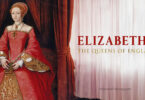Anne Stuart was born in 1665, the daughter of James Stuart and Anne Hyde. The second surviving of eight children born to her parents, Anne was a princess from birth. Her father’s older brother Charles was King of England, and he had no legitimate heirs (though he had many illegitimate heirs that he acknowledged, some of whom he wasn’t even sure were his). She and her older sister, Mary, were raised in their own household, apart from their parents, who only visited them occasionally. At the command of the King, Anne, and Mary were raised as Protestants, even though their parents were Catholic.
When Anne was eighteen years old, she was married to Prince George of Denmark. A younger son of the King of Denmark, George’s older brother had already inherited the throne at the time of the wedding. With no expectation of becoming king of Denmark and no ambition to, George was only too happy to move to England to live with Anne rather than following the custom of bringing her to Denmark to live with him. George expressed only a desire for a quiet, domestic life.
Though it was an arranged marriage, Anne and George proved exceptionally well-suited to each other. They enjoyed each other’s company and were devoted spouses. Their marriage was known to be a happy one. Her uncle, the king, gave them a sumptuous residence within the Palace of Whitehall in London, and Anne quickly became pregnant. Sadly, this first pregnancy resulted in a stillbirth. She recovered swiftly and became pregnant again, this time giving birth to a daughter named Mary. The following year, she gave birth to another daughter named Anne Sophia.
Anne’s father became King James II of England in 1685 after her uncle Charles crossed to the other side. As King, James swiftly set about appointing Catholics to military and administrative offices that the Test Acts of Parliament had intended to bar them from occupying. The English people were not pleased with this, and Anne was also concerned. With her sister Mary living with her husband William in the Netherlands, this left Anne, her husband, and their two daughters as the only members of the English royal family who were still attending Protestant religious services.

Anne’s father tried to convince her to have her younger daughter, Anne Sophia, baptized as a Catholic, a request which caused Anne to burst into tears. Anne wrote to her sister, “The doctrine of the Church of Rome is wicked and dangerous, their ceremonies—most of them—plain downright idolatry.” Because of this difference of religion, now that her father was King, Anne became estranged from him and her stepmother (Anne’s mother had crossed when Anne was still a young girl, and James remarried an Italian princess only six years older than Anne).
Anne suffered a string of personal tragedies in 1687. She miscarried another child, and just days after that, her husband and two young daughters came down with smallpox. Anne had had this herself as a child and so was immune. Her husband was dangerously ill for a while, and Anne herself tended to him. George eventually recovered. Their two daughters did not fare as well and crossed to the other side within a few weeks of each other. Later that year, Anne had another stillbirth.
While mourning their daughters, George was still ill with smallpox. A friend of Anne’s named Lady Rachel Russel wrote that the couple had taken the loss of their daughters…
“very heavily…sometimes they wept, sometimes they mourned in words, then sat silent, hand in hand.”
James II’s rule was not popular, and at the request of seven English nobles, Anne’s brother-in-law, William of Orange, invaded England in 1688 and deposed James. On the advice of friends, Anne sided with William against her father. The nobility, including Anne’s husband, soon followed her example.
James knew his daughter Mary would support her husband’s invasion, but he was devastated to learn of Anne’s defection. An unknown eyewitness to this wrote that upon learning of Anne’s desertion of him, James said, “God help me! Even my children have forsaken me.” While he had a newborn son with his second wife, who should have been next in line to the throne in normal circumstances, the English people knew this boy would be raised Catholic and did not want a Catholic monarchy. James and his wife and son were driven from England, taking refuge in France. His son and his son’s heirs were barred from the line of succession, and the throne was given jointly to William and Mary.
Anne finally gave birth to a child who lived beyond infancy in 1689, a son named William. As Anne’s sister and her husband had no living children (Mary had suffered a string of miscarriages with no live births), it looked as though Anne and her family would be the heirs to the English throne.
After their accession to the throne, William and Mary made Anne’s husband the Duke of Cumberland. However, they refused Anne and George the use of Richmond Palace and unsuccessfully opposed Anne’s request for a parliamentary allowance. William and Mary were concerned that if Anne were financially independent of them, they wouldn’t have as much influence over her and that she might put together a rival political faction that would threaten their joint crown. The once-close sisters became estranged because of this.
When Anne had another miscarriage in 1692, Mary visited her, but instead of offering comfort to her, she took the opportunity to berate her for her friendships with people who William and Mary considered rivals. This was to be the last time Mary and Anne saw each other again in person. Mary crossed to the other side of smallpox in 1694. William crossed a few years after in 1702 after contracting pneumonia from prolonged bedrest after breaking a collarbone in a fall from his horse. Anne was now Queen of England.
It was a bittersweet ascension to the throne. Anne’s last pregnancy had ended in a stillbirth in 1700. The same year, her eleven-year-old son, the only one of her children to survive infancy, crossed to the other side of unclear causes (his health had always been precarious). After seventeen pregnancies, she was a queen with no heirs.
Still, she had George, her husband, and the support of the English people. She even spoke of her pure Englishness at her first speech to Parliament as Queen, pointing out how she had never lived anywhere except England and that this was a prime reason why they could be certain she would always put England’s interests above any other nation’s.
Anne was a popular queen, taking a keen interest in affairs of the state. She was also an enthusiastic patron of the arts, especially theater, poetry, and music. She sponsored high-quality medals for rewards for achievements in the military and in politics. She even knighted Sir Isaac Newton in 1705.
Also, during Anne’s reign, England was officially united with Scotland in the Act of Union. England was now known as Great Britain. This was done to make the succession simpler, as Scotland had, until then, a separate throne and could have theoretically appointed a different monarch than the distant Protestant cousin who would be Anne’s heir apparent.
After her pregnancies ended, Anne suffered from gout, becoming increasingly unable to walk due to the pain it caused her. She was carried in a chair most places she went or used a chariot that had a seated platform for her (this chariot she drove herself and enjoyed it). Her now mostly sedentary lifestyle led to her becoming obese in her later life. The loss of her husband in 1708 further affected her delicate health at the time.
In 1714, Anne suffered a stroke and was unable to speak afterward. She crossed to the other side a couple of days after that, on August 1, 1714. John Arbuthnot, who was one of her doctors at the time of her crossing, believed her crossing to be a great release and relief from her, freeing her from decades of poor health and personal tragedies. She was buried beside her husband and many of her children in the Henry VII Chapel on the South Aisle of Westminster Abbey.
The act of succession that had been established during William and Mary’s reign meant that no Catholic could inherit the throne of England. Though there were upwards of fifty close relatives of Mary and Anne who were technically closer in line to the throne than the chosen heir, all were Catholic, and none would renounce their faith for the Protestant one in order to inherit the throne. Thus it came to be that the throne of England was inherited by George, Elector of Hanover, who became George I of England.
George was the great-nephew of Anne’s paternal grandfather, King Charles I of England, through Charles’s sister, Elizabeth, being the son of Elizabeth’s daughter, Sophia. George was also a great-grandson of Anne’s own paternal great-grandfather, King James I of England and VI of Scotland. George was Anne’s second cousin. The ascension of George ended the Stuart line of English kings, of which Anne was the last one, and began the Hanoverian line of English kings that is still on the British throne today (though a few surname changes have taken place over the generations).




